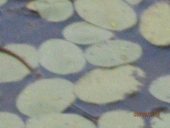








Idle dreamer




H Ludi Tyler wrote:
One webpage suggests Koi will eat watermeal.
http://ohioline.osu.edu/a-fact/0014.html













Idle dreamer









 They might be pretty darn unhappy in a northern pond.
They might be pretty darn unhappy in a northern pond.Idle dreamer












Joseph wrote:
adunca,
Good ideas, however, the difficulty is the size of the pond -- a 1/2 acre is alot of watermeal floating on the surface. And to drain it would mean alot of water has to be put somewhere else (.5 acre X 6ft depth average). Watermeal is prolific, from what I understand. If you miss a bit it will come back. And they hide in the muck on the bottom, so draining would need to be accompanied with a drying out process and/or a dredging out process. It might not be feasible.




adunca wrote:
3. Perhaps you can plant some water plants that consume the same nutrients?
Idle dreamer









H Ludi Tyler wrote:
Tilapia die at water temperature 50F.They might be pretty darn unhappy in a northern pond.








 Ill sleep on it and see if I get any clear notions. this is one of those design problems that take some time to observe the integration of issues, clearly!
Ill sleep on it and see if I get any clear notions. this is one of those design problems that take some time to observe the integration of issues, clearly!







 They'll just sit there being miserable.
They'll just sit there being miserable.Idle dreamer

|
You've got to ask yourself one question: "Do I feel lucky?" Well, do ya, tiny ad?
The new purple deck of permaculture playing cards
https://www.kickstarter.com/projects/paulwheaton/garden-cards
|






